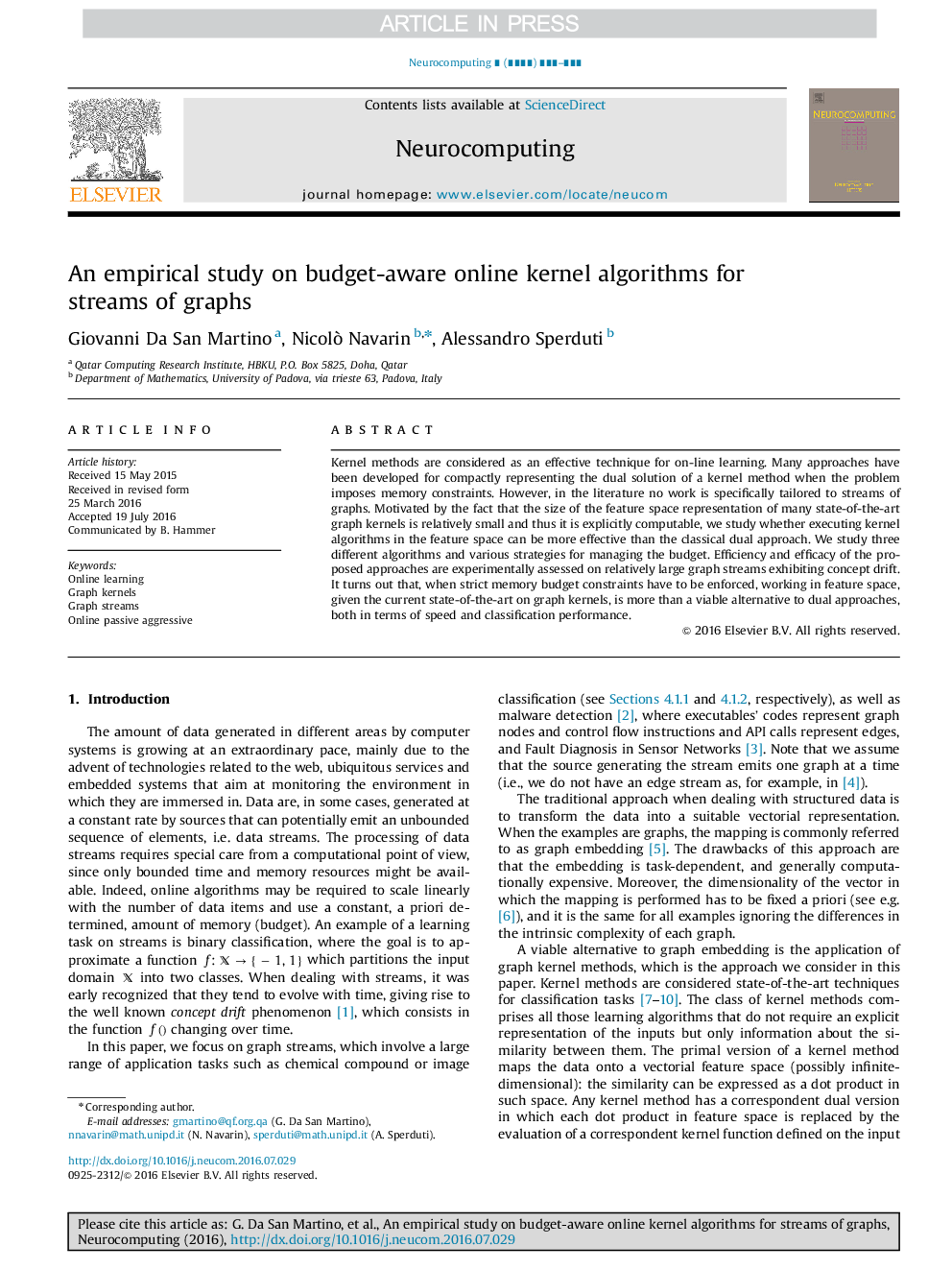| Article ID | Journal | Published Year | Pages | File Type |
|---|---|---|---|---|
| 4948332 | Neurocomputing | 2016 | 20 Pages |
Abstract
Kernel methods are considered as an effective technique for on-line learning. Many approaches have been developed for compactly representing the dual solution of a kernel method when the problem imposes memory constraints. However, in the literature no work is specifically tailored to streams of graphs. Motivated by the fact that the size of the feature space representation of many state-of-the-art graph kernels is relatively small and thus it is explicitly computable, we study whether executing kernel algorithms in the feature space can be more effective than the classical dual approach. We study three different algorithms and various strategies for managing the budget. Efficiency and efficacy of the proposed approaches are experimentally assessed on relatively large graph streams exhibiting concept drift. It turns out that, when strict memory budget constraints have to be enforced, working in feature space, given the current state-of-the-art on graph kernels, is more than a viable alternative to dual approaches, both in terms of speed and classification performance.
Keywords
Related Topics
Physical Sciences and Engineering
Computer Science
Artificial Intelligence
Authors
Giovanni Da San Martino, Nicolò Navarin, Alessandro Sperduti,
